Raisins are among the most popular dried fruits, which is characterized by their ability to be sweet naturally and their versatility. But, like other dried fruit, they do not resist decay. Raisins, when improperly stored or kept over a long period in a damp environment, can develop mold. The smartest thing to know about the raisins is how to detect their presence, their causes, and how to store them without facing problems with their health, particularly the premium ones, such as Iranian raisins. In this article, we will investigate what do moldy raisins look like.
Clear Visual Indicators of Mold on Raisins
Moldy raisins commonly have visible white, green, or gray fuzzy coats on them. Mold has a cottony or soft look as compared to sugar crystallization, which appears as a thin layer of crystals that looks like a powdery or shiny layer at the surface. What do moldy raisins look like? Some of these distinguishing indicators include:
- Color changes: White or green spots that were not originally part of the raisin’s texture.
- Texture differences: Mold may create a fuzzy or sticky film, while sugar crystals feel gritty and dry.
- Smell: Musty, sour, or fermented smell may be a product of spoilage.
The crystallized sugar is occasionally in the form of a light, white frost, particularly on very dry raisins. However, the growth of mold is not even and is usually followed by clusters or color changes in the rest of the raisin.
Why Raisins Develop Mold
After understanding what do moldy raisins look like, you should know the reason why raisins develop molds:
- Excessive moisture: When excess moisture is absorbed by the raisins, then fungal growth will happen.
- Lack of good storage conditions: When the environment is warm and humid, the mold spores can multiply.
- Leftover packaging: In case raisins are kept in non-airtight containers, they can be colonized by airborne spores of molds easily.
- Age and shelf life: When natural preservatives are weakened, raisins that remain unused will get moldy.
Raisin storage experts argue that it is crucial to control moisture. Mold develops when the water activity exceeds safe levels, especially when the raisins are not in closed containers or refrigerators.
How to Store Raisins to Prevent Mold Growth
To lengthen their lifespan, it is necessary to store them properly:
- Use airtight containers to avoid the absorption of moisture.
- Keep in a cool and dark environment and not in direct sunlight.
- Storage, Refrigeration, or freezing fo long-term storage: Refrigeration or freezing can drastically slow degradation.
- Add silica gel to containers to prevent humidity.
For example, Iranian raisins, known for their premium quality and natural sweetness, maintain their flavor and texture best when stored in low-humidity, sealed packaging. These raisins can last up to two years when properly frozen.
What Happens If You Eat Moldy Raisins
One important consideration is what happens if you eat moldy raisins? Consumption of moldy raisins leads to health complications, particularly when the mold contains mycotoxins, which are toxic elements and can damage the liver and immune system. Eating dried fruit that is spoiled e.g. moldy raisins, can result in:
- Nausea and vomiting
- Stomach cramps and diarrhea
- Allergic reactions like swelling or itching
- Mold spore respiratory irritation
What happens if you eat moldy raisins just in small amounts? Although minimal exposure to molds may not necessarily lead to instant symptoms, you are not supposed to consume openly matted raisins. The microscopic spores can also be transmitted by the entire batch of mold, even when a few of the raisins get bad, so it is better to dispose of the whole container.
How to Differentiate Mold from Sugar Crystals
When we understand what do moldy raisins look like, we should know its difference with sugar crystallization. Since both mold and sugar crystallization can appear white, the texture test is most reliable:
| Aspect | Mold | Sugar Crystals |
| Texture | Soft, fuzzy, or sticky | Gritty or sandy |
| Color | White, gray, or green patches | White or yellowish shine |
| Smell | Sour, musty | Sweet or neutral |
| Spread pattern | Random, uneven growth | Thin and even coating |
If you are unsure, it’s safer to throw the raisins out rather than take a risk and consume mold.
Safety and Disposal of Moldy Dried Fruit
Now you know what do moldy raisins look like. When you find moldy raisins:
- Do not even bother washing and reusing them. Water can spread spores.
- Discard the entire batch. Adjacent raisins are most likely to be polluted with spores that are traveling in the air.
- Wash the pot by using hot water and soap, and disinfect then reuse.
Again, in case by chance you consume a few spoiled raisins and feel bad, consult a doctor, particularly when your gastrointestinal symptoms or allergy occur.
Kourosh Foods: A Leader in Quality and Innovation
Kourosh Foods is an Iranian business enterprise that manufactures, processes, and markets dried fruits, nuts, legumes, and other types of food items. It has focused on food safety and high quality, whereby it obtains natural farm produce through the local farms. It also packages them in modernized processing facilities, where it sells them to the local market and also to international markets. Kourosh Foods adheres to the international standards of its products. Contact us today to place your order.
FAQs
- What does mold on raisins look like?
Mold on raisins has the form of fuzzy spots, and they are white, gray, green, or black. The surface can be sticky or web-like, and the raisins can smell sour or musty. - Is white coating on raisins always mold?
A dry powdery white film can also be simply a crystallization of sugar, and it is not harmful. However, Mold appears fuzzy or slimy and has a foul smell. - Can you just remove the moldy parts and eat the rest?
Mold grows with the help of invisible spores, and even fine-looking raisins can be contaminated. The best thing to do is to dispose of the complete batch.

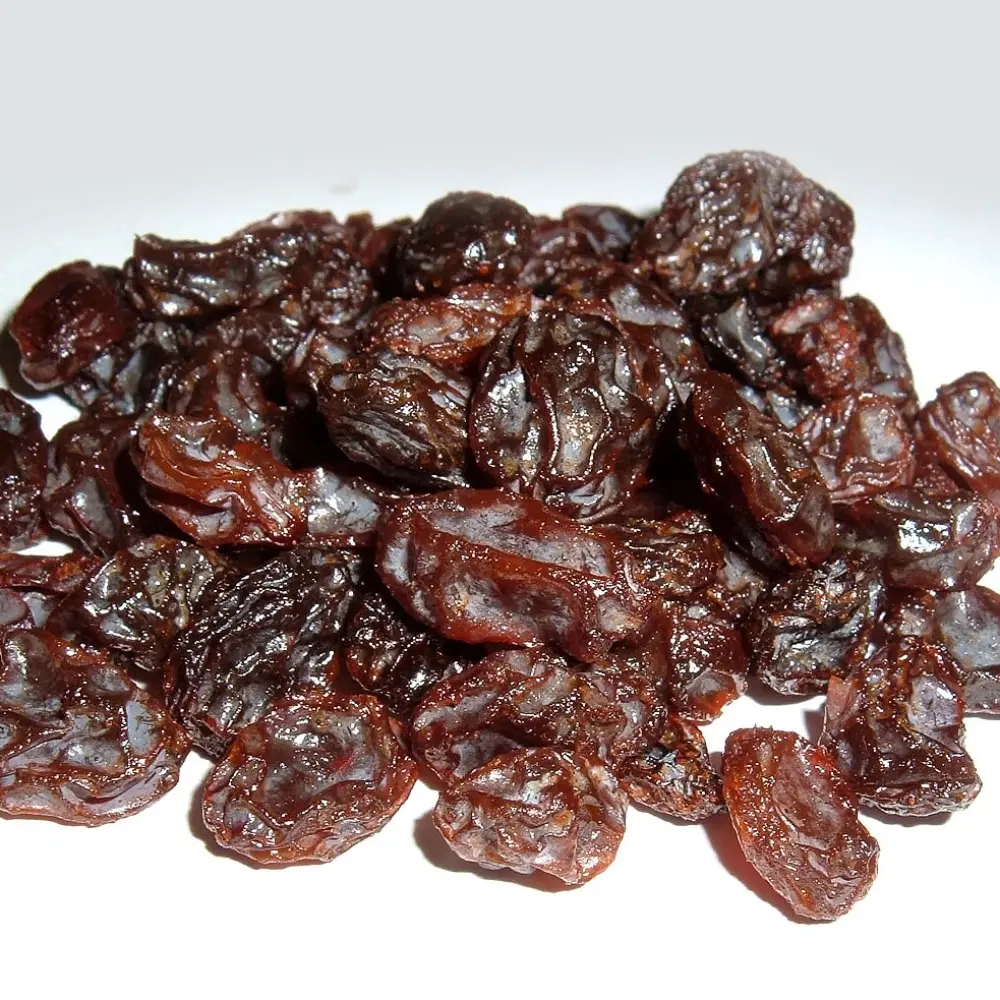
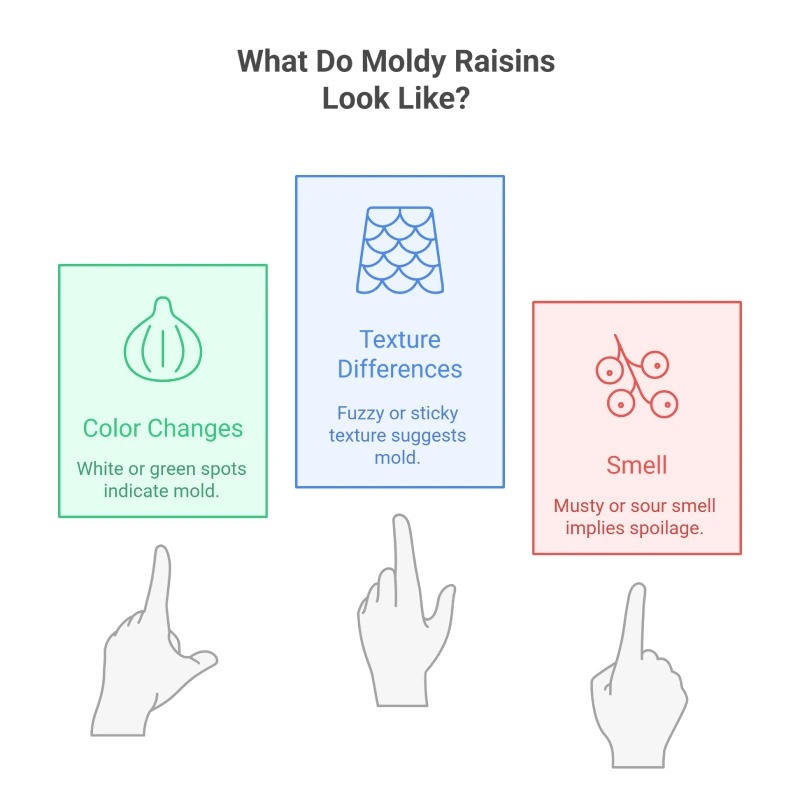
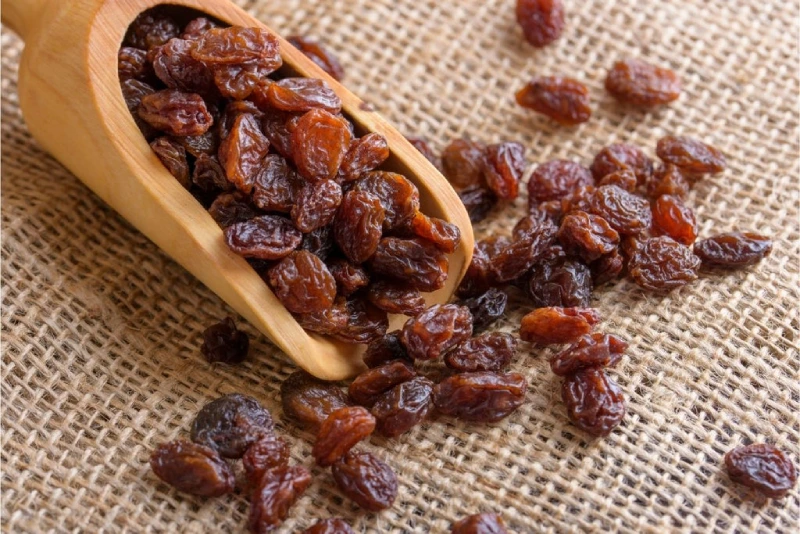
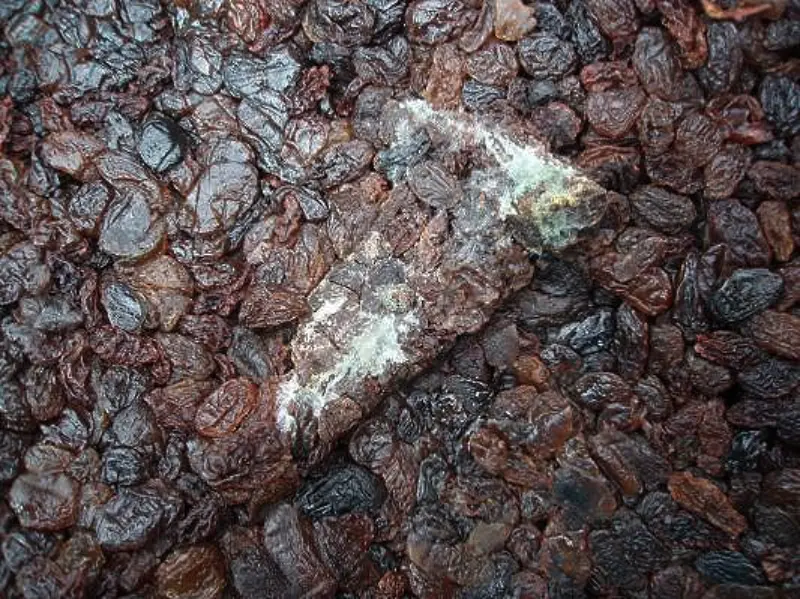
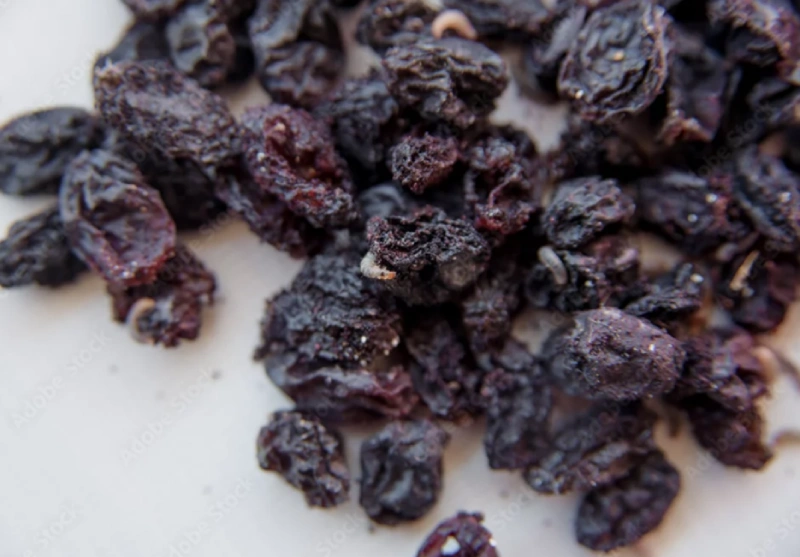


![How Do You Freeze Dry fruit [ +5 Best Ways to Freeze Dried Fruit ]](https://kouroshfoods.com/wp-content/uploads/2025/12/how-do-you-freeze-dry-fruit-2-300x300.webp)
![Are Dates Healthier Than Sugar? [Complete Guide for Healthy Diet]](https://kouroshfoods.com/wp-content/uploads/2025/12/are-dates-healthier-than-sugar-1-300x300.webp)
